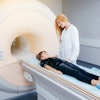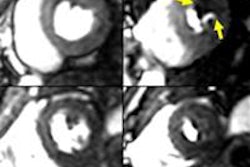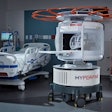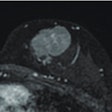Tuesday, December 3 | 3:20 p.m.-3:30 p.m. | SSJ16-03 | Room E451A
Pre- and post-MR arthrograms of the shoulder are useful in identifying unstable labral tears and provide valuable information for presurgical planning, according to a study to be presented in this afternoon RSNA 2013 session.For the study, researchers evaluated patients with superior labral anterior to posterior (SLAP) tears, posterior labral tears, and anterior labral tears, which can cause significant discomfort and involve surgery to provide relief for patients.
"In the past, it was thought that MRI was simply a static image and could not provide information as to whether a tear was stable or not," lead author Dr. Thomas Magee, managing partner at NeuroSkeletal Imaging in Merritt Island, FL, told AuntMinnie.com. "With use of pre- and postarthrographic imaging, we can see if a tear displaces. This tells the surgeon preoperatively that a tear is unstable and likely requires surgical intervention."
Magee and colleagues retrospectively evaluated 150 consecutive patients on whom both conventional shoulder MRI and MR arthrograms were performed on the same day. Of those 150 subjects, there were 94 SLAP tears, 53 posterior labral tears, and 42 anterior labral tears based on MRI results.
All 150 patients proceeded to arthroscopy, which detected all lesions found by MRI. Pre- versus postarthrographic images showed a change in the position of the labral tear for 23 SLAP tears, 16 posterior labral tears, and 17 anterior labral tears. All of these labral tears were considered unstable, and surgical tacking was required.
"The presence of unstable labral tears impacts possible surgical treatment," Magee noted.
There were five SLAP tears, three anterior labral tears, and four posterior labral tears seen on arthroscopy but not detected on MRI or MR arthrography.
Magee and colleagues are continuing their research, looking at dynamic labral imaging without the use of intra-articular contrast to provide the same information.


.fFmgij6Hin.png?auto=compress%2Cformat&fit=crop&h=100&q=70&w=100)





.fFmgij6Hin.png?auto=compress%2Cformat&fit=crop&h=167&q=70&w=250)











